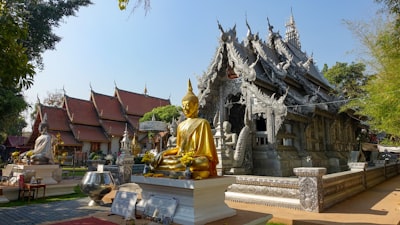
One of the top attractions in Chiang Mai is the Wat Phra Singh, a stunning 14th-century Buddhist temple known for its intricate architecture and beautiful murals. Visitors can explore the temple's serene grounds and admire the impressive Lanna-style structures. Another must-visit site is the Doi Suthep, a sacred mountain that overlooks the city. Atop the mountain, visitors can explore the Wat Phra That Doi Suthep, a revered Buddhist temple that offers breathtaking views of Chiang Mai and the surrounding countryside. The Old City of Chiang Mai, with its well-preserved city walls and moats, is a captivating area to explore on foot. Visitors can wander through the charming streets, discover local shops and eateries, and visit historic temples such as Wat Chedi Luang and Wat Phan Tao. The Chiang Mai Night Bazaar is a lively and vibrant market that comes alive in the evenings. Visitors can browse a vast array of handicrafts, textiles, and local delicacies, and immerse themselves in the bustling atmosphere of this popular tourist destination. For a unique cultural experience, visitors can explore the Baan Tawai Village, a renowned center for woodcarving and handicrafts. Visitors can watch skilled artisans at work, browse the local shops, and even participate in workshops to learn traditional crafting techniques. The Doi Inthanon National Park, located just outside of Chiang Mai, is a must-visit destination for nature lovers. Visitors can hike through the park's lush forests, visit the stunning Doi Inthanon, the highest mountain in Thailand, and admire the beautiful waterfalls and scenic viewpoints. The Elephant Sanctuaries in Chiang Mai offer visitors the opportunity to interact with and observe these magnificent creatures in a responsible and ethical manner. Visitors can participate in activities such as feeding, bathing, and observing the elephants in their natural habitat. The Chiang Mai Flower Festival, held annually in February, is a vibrant celebration of the region's floral abundance. Visitors can admire the stunning flower displays, participate in cultural performances, and immerse themselves in the festive atmosphere. Finally, the Lanna Folklife Museum provides a fascinating glimpse into the rich cultural heritage of Northern Thailand. Visitors can explore exhibits showcasing traditional architecture, textiles, and handicrafts, and learn about the region's history and customs.
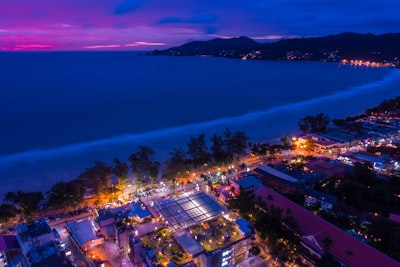
Phuket Old Town Phuket Old Town is a charming historic district known for its Sino-Portuguese architecture, colorful shophouses, and lively street markets. Wander through the narrow streets, browse the local boutiques and art galleries, and stop for a bite to eat at one of the many cafes and restaurants. Wat Chalong Wat Chalong is the most famous and revered Buddhist temple in Phuket. The temple complex features ornate golden spires, intricate carvings, and a serene atmosphere. Visitors can learn about the history and significance of the temple, and observe Buddhist rituals and ceremonies. Promthep Cape Promthep Cape is a stunning viewpoint located at the southernmost tip of Phuket. The panoramic vistas of the Andaman Sea and the surrounding islands are simply breathtaking, especially at sunset. It's a popular spot for photography and a great place to watch the sun dip below the horizon. Phi Phi Islands The Phi Phi Islands are a group of stunning tropical islands located a short boat ride from Phuket. Known for their crystal-clear turquoise waters, white sand beaches, and dramatic limestone cliffs, the Phi Phi Islands are a must-visit destination. Spend a day exploring the islands, snorkeling or diving in the vibrant marine life, and relaxing on the beach. Bangla Road Bangla Road is the heart of Phuket's lively nightlife scene. This bustling street is lined with bars, clubs, and entertainment venues, offering a wide range of music, drinks, and activities. It's a great place to experience the vibrant energy and nightlife of Phuket. Phuket Aquarium The Phuket Aquarium is a modern and well-designed facility that showcases the diverse marine life of the Andaman Sea. Visitors can see a variety of tropical fish, sharks, rays, and other marine creatures in their natural habitats. The aquarium also features interactive exhibits and educational displays. Gibbon Rehabilitation Project The Gibbon Rehabilitation Project is a non-profit organization dedicated to the rescue and rehabilitation of gibbons, a species of small ape found in Southeast Asia. Visitors can learn about the organization's conservation efforts and observe the gibbons in their natural habitat. Phuket Big Buddha The Phuket Big Buddha is a massive white marble statue that sits atop the Nakkerd Hills, offering panoramic views of the island. The statue is an impressive sight, standing at over 45 meters tall and visible from many parts of Phuket. Karon Beach Karon Beach is one of Phuket's most popular and beautiful beaches, known for its long stretch of soft, golden sand and clear, turquoise waters. It's a great spot for swimming, sunbathing, and enjoying water sports like jet skiing and parasailing. Phuket Trickeye Museum The Phuket Trickeye Museum is a unique interactive art museum that features 3D illusion paintings and interactive exhibits. Visitors can take creative and fun photos with the artwork, creating the illusion of being part of the scene.
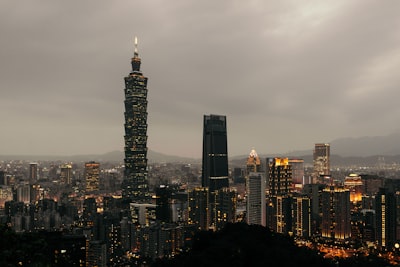
Chiang Kai-shek Memorial Hall: This iconic landmark honors the former president of Taiwan and features a grand white marble structure, beautiful gardens, and the National Concert Hall and National Theater. Taipei 101: Soaring 1,667 feet, this skyscraper was once the world's tallest building. Visitors can ride the high-speed elevator to the observation deck for panoramic views of the city. National Palace Museum: Home to the world's largest collection of Chinese art and artifacts, this museum showcases a vast array of treasures, including ancient calligraphy, paintings, and jade carvings. Longshan Temple: One of the most famous temples in Taiwan, Longshan Temple is a stunning example of traditional Chinese architecture and a hub of religious and cultural activity. Beitou Hot Springs: Nestled in a lush, volcanic valley, Beitou is renowned for its natural hot springs, where visitors can relax and soak in the therapeutic waters. Shilin Night Market: Immerse yourself in the vibrant atmosphere of this bustling night market, where you can sample a variety of Taiwanese street food, browse local handicrafts, and experience the energy of Taipei's nightlife. Yangmingshan National Park: Explore the natural beauty of this volcanic mountain range, with its lush forests, scenic hiking trails, and stunning vistas. Tamsui Old Street: Stroll along this historic waterfront promenade, lined with traditional shops, seafood restaurants, and scenic views of the Tamsui River. Taipei Botanical Garden: Escape the city's hustle and bustle in this serene oasis, featuring beautiful gardens, greenhouses, and a tranquil pond. Taipei Zoo: Home to a diverse collection of animals, including the iconic Formosan black bear, the Taipei Zoo is a popular destination for families and nature enthusiasts.
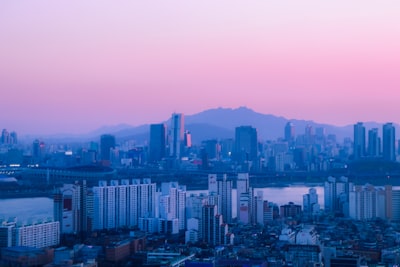
Gyeongbokgung Palace Gyeongbokgung Palace is the largest of the Five Grand Palaces built by the Joseon dynasty. Constructed in 1395, it served as the main royal palace and the seat of power for over 500 years. Visitors can explore the grand throne hall, beautiful gardens, and the National Palace Museum of Korea which showcases the palace's history and cultural artifacts. Changdeokgung Palace Changdeokgung Palace is a UNESCO World Heritage site and one of the best preserved of the Five Grand Palaces. It features a traditional Korean garden called the Secret Garden, known for its serene ponds, pavilions, and landscaping that blends harmoniously with the natural environment. Bukchon Hanok Village Bukchon Hanok Village is a historic neighborhood filled with traditional Korean houses called hanoks. Visitors can wander the charming narrow alleys, visit artisan workshops, and experience the atmosphere of old Seoul. Many of the hanoks have been converted into guesthouses, tea houses, and cultural centers. Insadong Insadong is a vibrant cultural district known for its art galleries, antique shops, traditional tea houses, and street food stalls. It's a popular spot to browse Korean crafts, calligraphy, and other traditional wares. Visitors can also enjoy cultural performances and demonstrations. Myeongdong Myeongdong is Seoul's premier shopping and dining district, famous for its bustling streets lined with global fashion brands, cosmetic shops, and street food vendors. It's a lively, fast-paced area that offers an immersive urban experience. N Seoul Tower Perched atop Namsan Mountain, the N Seoul Tower offers panoramic views of the Seoul skyline. Visitors can ride a cable car up the mountain, explore the observation decks, and visit the digital observatory. The tower also has restaurants, a gift shop, and a popular "love lock" installation. Dongdaemun Design Plaza Designed by renowned architect Zaha Hadid, the Dongdaemun Design Plaza is an iconic landmark known for its futuristic, wave-like architecture. It houses design museums, exhibition halls, shopping, and a 24-hour marketplace, making it a hub for fashion, design, and culture. Gwanghwamun Square Gwanghwamun Square is a public plaza located in front of Gyeongbokgung Palace. It features statues of King Sejong the Great and Admiral Yi Sun-sin, as well as the Gwanghwamun Gate, one of the main entrances to the palace. The square often hosts cultural events and demonstrations. Cheonggyecheon Stream Cheonggyecheon Stream is a 5.8-mile long urban renewal project that has transformed a former covered-over stream into a scenic, natural oasis in the heart of Seoul. Visitors can stroll along the landscaped pathways, admire the modern bridges, and enjoy the tranquil ambiance. Gangnam District Gangnam District is known for its affluence, high-end shopping, and trendy nightlife. Visitors can explore the upscale boutiques and department stores, dine at chic restaurants, and experience the vibrant K-pop culture that originated in this area. Lotte World Lotte World is one of the world's largest indoor theme parks, featuring amusement park rides, an ice rink, an aquarium, shopping malls, and more. It's a popular destination for families and those seeking a full day of entertainment. DMZ (Demilitarized Zone) The DMZ is the heavily fortified border between North and South Korea, a legacy of the Korean War. Visitors can take guided tours to observe the tense military presence, visit observation decks, and learn about the history and current state of the division between the two countries.
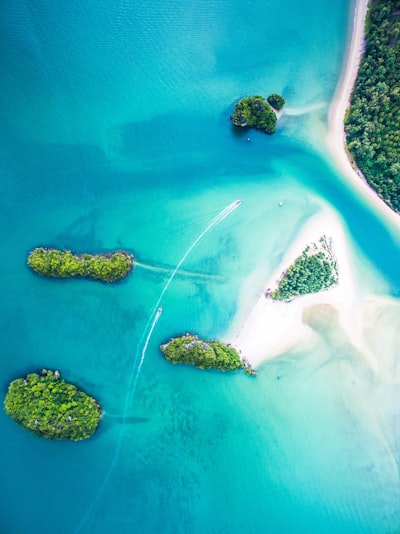
Hallasan National Park: Hallasan is the highest mountain in South Korea, standing at 1,950 meters (6,400 feet) tall. The park offers numerous hiking trails, including the challenging Seongpanak Trail and the more moderate Eorimok Trail, which lead to the stunning volcanic crater lake at the summit. Along the way, you'll encounter diverse flora and fauna, including the rare Jeju black goat. Cheonjiyeon Waterfall: This 22-meter (72-foot) high waterfall is one of the most picturesque on the island. The waterfall is surrounded by lush, verdant forests and is a popular spot for both sightseeing and hiking. Nearby, you can also visit the Cheonjeyeon Waterfall, a three-tiered cascade that is equally breathtaking. Manjanggul Cave: This UNESCO World Heritage site is one of the world's longest lava tubes, stretching over 7 kilometers (4.3 miles). The cave features stunning rock formations, including towering columns, lava stalactites, and lava shelves. Visitors can explore a 1-kilometer (0.6-mile) section of the cave, which is well-lit and paved for easy access. Seongsan Ilchulbong: Also known as "Sunrise Peak," this tuff cone is the result of a volcanic eruption that occurred over 100,000 years ago. The peak offers panoramic views of the surrounding coastline and is a popular spot to watch the sunrise. Visitors can hike to the top of the crater, which takes approximately 30 minutes. Jeju Loveland: This unique sculpture park features over 140 sculptures depicting various sexual themes and positions. The park is designed to be both educational and entertaining, providing a lighthearted and playful exploration of human sexuality. Jeju Haenyeo Museum: The Haenyeo are female divers who have been harvesting seafood from the waters around Jeju Island for centuries. The museum showcases the history, culture, and traditions of these remarkable women, who are recognized by UNESCO as an Intangible Cultural Heritage. Jeju Olle Trails: The Jeju Olle Trails are a network of 26 walking paths that wind through the island's stunning landscapes, including coastal cliffs, volcanic rock formations, and traditional villages. The trails range in difficulty and length, making them accessible to hikers of all skill levels. Jusangjeolli Cliff: These unique basalt rock formations were created by the cooling of lava flows. The hexagonal columns, which resemble a set of stairs, offer a dramatic and picturesque view of the coastline. Seopjikoji: This scenic coastal area is known for its stunning views of the ocean, volcanic rock formations, and traditional thatched-roof houses. Visitors can explore the area's hiking trails, visit the Seopjikoji Lighthouse, and enjoy the peaceful atmosphere. Jeju Teddy Bear Museum: This whimsical museum showcases a vast collection of teddy bears, ranging from antique to contemporary designs. Visitors can learn about the history and evolution of the beloved stuffed animal, as well as participate in interactive exhibits and workshops. Jeju Aerospace Museum: This museum offers a fascinating look into the history of aviation and space exploration. Visitors can explore interactive exhibits, view aircraft and spacecraft, and learn about the technological advancements that have shaped the industry. Jeju Stone Park: This unique park features a collection of over 13,000 volcanic rocks and stones, each with its own unique shape, color, and story. Visitors can wander through the park's winding paths, admire the stunning displays, and learn about the island's geological history. Jeju Volcanic Island and Lava Tubes: Jeju Island is a UNESCO World Heritage site, recognized for its unique volcanic landscape, including the Hallasan volcano, lava tubes, and other geological formations. Visitors can explore these natural wonders and learn about the island's volcanic origins. Jeju Maze Park: This whimsical park features a series of intricate mazes, each with its own theme and level of difficulty. Visitors can challenge themselves to navigate the mazes, which are surrounded by beautiful gardens and scenic views. These are just a few of the many must-see attractions that Jeju Island has to offer. Whether you're interested in nature, culture, history, or adventure, this stunning island has something for everyone.
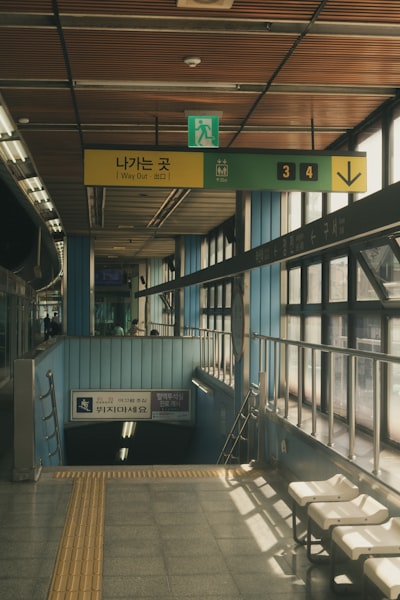
Haeundae Beach: Busan's most famous beach, Haeundae is a stunning stretch of sand and crystal-clear waters. Visitors can enjoy swimming, sunbathing, and a variety of water sports. The beach also hosts the annual Busan International Film Festival, one of the largest film festivals in Asia. Gamcheon Culture Village: This colorful and picturesque neighborhood is often referred to as the "Machu Picchu of Busan." The village is known for its vibrant, maze-like streets, adorned with murals, sculptures, and unique shops and cafes. Jagalchi Fish Market: As the largest seafood market in South Korea, Jagalchi is a must-visit destination for seafood lovers. Visitors can browse the stalls, sample fresh seafood, and even watch live fish auctions. Nurimaru APEC House: This modern architectural landmark was the venue for the 2005 APEC (Asia-Pacific Economic Cooperation) summit. Visitors can explore the building's elegant interiors and enjoy panoramic views of the surrounding Haeundae Beach. Taejongdae Resort Park: This stunning natural park offers breathtaking coastal scenery, including towering cliffs, a lighthouse, and a scenic train ride. Visitors can hike along the trails, visit the observation deck, and enjoy the peaceful atmosphere. Busan Tower: Located in the heart of the city, Busan Tower provides panoramic views of the city and the surrounding harbor. Visitors can ride the elevator to the observation deck or enjoy the views from the revolving restaurant at the top. Haedong Yonggungsa Temple: This picturesque Buddhist temple is situated on the rocky coastline, offering a unique and serene setting. Visitors can explore the temple's intricate architecture, statues, and gardens, and witness the stunning views of the East Sea. Busan Museum: This comprehensive museum showcases the rich history and culture of Busan, with exhibits ranging from ancient artifacts to contemporary art. Visitors can learn about the city's maritime heritage, traditional crafts, and the local way of life. Gwangalli Beach: Known for its stunning views of the Gwangan Bridge, Gwangalli Beach is a popular destination for both locals and tourists. Visitors can enjoy the lively atmosphere, beachside cafes, and the nightly light show on the bridge. Busan Cinema Center: As the home of the Busan International Film Festival, this modern architectural marvel is a must-visit for film enthusiasts. Visitors can explore the various screening rooms, attend film screenings, and learn about the city's vibrant film industry. These are just a few of the many must-see attractions in Busan, South Korea. Whether you're interested in natural wonders, cultural heritage, or modern attractions, Busan has something to offer every traveler.
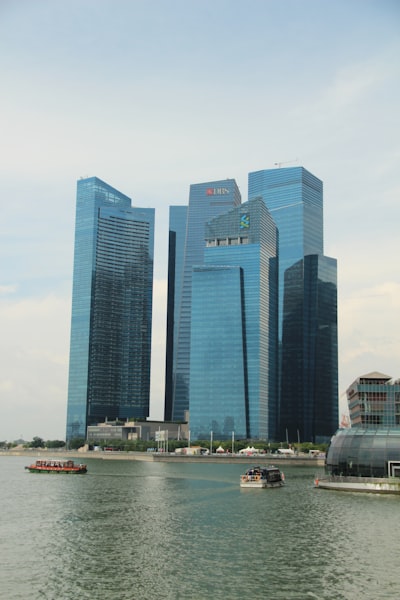
Marina Bay Sands: This iconic hotel and resort complex features a stunning infinity pool, observation deck, and a wide range of shopping, dining, and entertainment options. Gardens by the Bay: This expansive nature park showcases stunning gardens, including the iconic Supertree Grove and the Cloud Forest and Flower Dome conservatories. Singapore Flyer: This giant Ferris wheel offers breathtaking views of the city skyline and the surrounding waterfront. Sentosa Island: This resort island is home to a variety of attractions, including Universal Studios Singapore, the S.E.A. Aquarium, and the iconic Merlion statue. Singapore Zoo: Known for its open-concept enclosures and diverse animal population, the Singapore Zoo is a must-visit for nature enthusiasts. Chinatown: Explore the vibrant streets of Chinatown, with its colorful shops, temples, and delicious street food. Singapore River: Take a leisurely cruise along the Singapore River to admire the city's historic architecture and modern skyscrapers. National Museum of Singapore: This museum offers a comprehensive overview of Singapore's history and culture through interactive exhibits and displays.
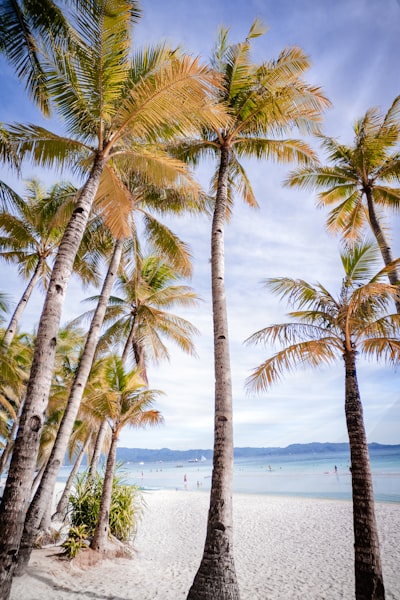
White Beach: The main attraction of Boracay, White Beach is a 4-kilometer stretch of powdery white sand and turquoise waters. It's divided into three stations, each with its own unique vibe and amenities. Enjoy swimming, sunbathing, and water sports like parasailing, jet skiing, and banana boat rides. Puka Beach: Located on the northern tip of the island, Puka Beach is known for its pristine, secluded environment and smaller crowds compared to White Beach. Explore the natural beauty of the cove, collect Puka shells, and enjoy a peaceful day away from the hustle and bustle. Diniwid Beach: A quieter and more secluded alternative to White Beach, Diniwid Beach offers a serene atmosphere and stunning views of the limestone cliffs. It's an excellent spot for swimming, snorkeling, and watching the sunset. Bulabog Beach: On the eastern side of the island, Bulabog Beach is a hub for water sports enthusiasts, particularly kiteboarding and windsurfing. The strong winds make it an ideal destination for these activities. Willy's Rock: A unique geological formation located near Station 1 of White Beach, Willy's Rock is a popular spot for photos and exploration. Climb to the top of the rock for panoramic views of the surrounding area. Bat Caves: Explore the mysterious Bat Caves, located on the northern end of the island. These caves are home to thousands of bats and offer a unique and adventurous experience for visitors. Crocodile Island: Take a short boat ride to the nearby Crocodile Island, where you can spot the resident crocodiles and enjoy snorkeling in the clear waters surrounding the island. Ariel's Point: For the adventurous, Ariel's Point offers a range of activities, including cliff jumping, kayaking, and snorkeling. It's a popular day trip destination from Boracay. Boracay Butterfly Garden: Discover the vibrant and diverse butterfly species at the Boracay Butterfly Garden, a serene oasis located in the heart of the island. Boracay Zipline: Experience the thrill of ziplining over the stunning landscapes of Boracay, offering breathtaking views of the island. D'Mall: Explore the lively D'Mall, a bustling commercial area with a wide variety of shops, restaurants, and bars. It's a great place to shop for souvenirs, enjoy local cuisine, and experience the vibrant nightlife. Jonah's Fruit Shake & Snack Bar: Indulge in the famous fruit shakes and snacks at Jonah's, a local institution known for its delicious and refreshing offerings. Sunsets: Witness the breathtaking sunsets over the horizon, a must-see experience in Boracay. The best spots to enjoy the sunset are along White Beach and Diniwid Beach. Nightlife: Boracay is renowned for its vibrant nightlife, with a wide range of bars, clubs, and beach parties catering to all tastes. Explore the lively scene at stations 1, 2, and 3 of White Beach. Boracay is a true paradise, offering a perfect blend of natural beauty, adventure, and relaxation. Whether you're seeking a peaceful escape or an action-packed vacation, this island destination has something for everyone.
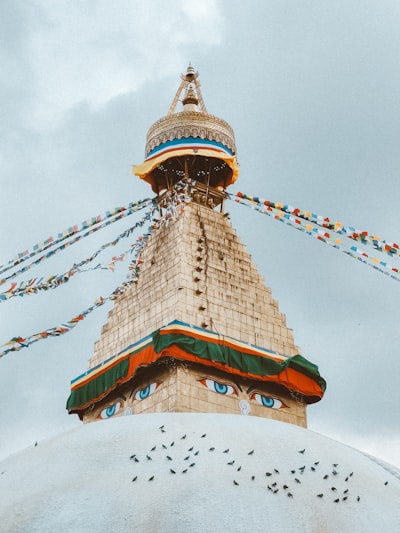
Boudhanath Stupa: One of the largest Buddhist stupas in the world, Boudhanath Stupa is a UNESCO World Heritage Site and a significant pilgrimage site for Tibetan Buddhists. The massive white dome and the surrounding monasteries create a serene and spiritual atmosphere. Swayambhunath Stupa: Also known as the "Monkey Temple," Swayambhunath is an ancient Buddhist stupa perched atop a hill overlooking Kathmandu Valley. The site is renowned for its iconic white dome and the all-seeing eyes of Buddha that adorn the structure. Durbar Square: Kathmandu's Durbar Square is a UNESCO World Heritage Site that showcases the city's rich architectural heritage. The square is home to numerous temples, palaces, and historical monuments, including the Kumari Ghar, the residence of the Living Goddess. Pashupatinath Temple: One of the most sacred Hindu temples in Nepal, Pashupatinath is dedicated to Lord Shiva and is a significant pilgrimage site for Hindus. The temple complex features intricate carvings and is situated along the banks of the Bagmati River. Bhaktapur Durbar Square: Located just outside of Kathmandu, Bhaktapur Durbar Square is another UNESCO World Heritage Site that showcases the architectural and cultural heritage of the Newari people. The square is known for its well-preserved medieval buildings, temples, and traditional crafts. Kopan Monastery: This Tibetan Buddhist monastery is a popular destination for meditation retreats and spiritual teachings. Visitors can explore the serene grounds, attend teachings, and immerse themselves in the peaceful atmosphere. Garden of Dreams: A tranquil oasis in the heart of Kathmandu, the Garden of Dreams is a beautifully landscaped garden that offers a respite from the bustling city. The garden features pavilions, fountains, and lush greenery, creating a serene and relaxing environment. Thamel: Thamel is the vibrant and lively tourist hub of Kathmandu, known for its narrow streets, colorful shops, and lively nightlife. Visitors can explore the local markets, try traditional Nepali cuisine, and immerse themselves in the bustling energy of the neighborhood. Narayanhiti Palace Museum: The former royal palace of the Nepalese monarchy, the Narayanhiti Palace Museum offers a glimpse into the country's rich history and the lives of the former royal family. Visitors can explore the opulent interiors and learn about Nepal's political and cultural heritage. Freak Street: Also known as Jhochhen Tole, Freak Street was once a hub for hippie culture in the 1960s and 1970s. Today, it remains a popular destination for travelers seeking a taste of Kathmandu's counterculture and alternative lifestyle.
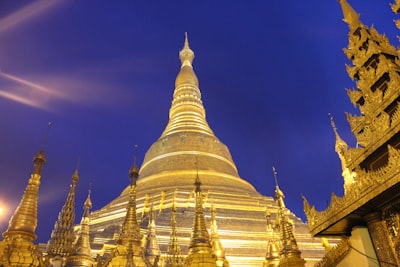
The Shwedagon Pagoda: The centerpiece of this sacred complex, the Shwedagon Pagoda is a stunning 99-meter-tall stupa covered in gold plates and crowned with a bejeweled umbrella. Visitors can explore the various shrines, statues, and relics housed within the pagoda, including the eight images of Buddha and the sacred hair relics. The Four Entrances: The Shwedagon Pagoda is accessible through four main entrances, each with its own unique features. The eastern entrance is the most popular, with a long staircase leading up to the pagoda. The southern entrance features a reclining Buddha statue, while the western entrance boasts intricate carvings and sculptures. The northern entrance is known for its impressive Chinthe (mythical lion) statues. The Planetary Posts: Surrounding the Shwedagon Pagoda are 64 planetary posts, each representing a different day of the week and associated with a specific planetary deity. Visitors can observe the rituals and offerings made at these posts, which are an integral part of the pagoda's spiritual significance. The Dhammayangyi Temple: Located within the Shwedagon Pagoda complex, the Dhammayangyi Temple is a massive brick structure dating back to the 12th century. Visitors can admire the intricate brickwork and explore the temple's various shrines and Buddha images. The Kaba Aye Pagoda: This modern pagoda, built in the 1950s, is situated near the Shwedagon Pagoda. It is known for its impressive size and unique architectural style, which blends traditional Burmese elements with more contemporary design. The Maha Pasana Guha Cave: Situated beneath the Shwedagon Pagoda, the Maha Pasana Guha Cave is believed to be the site where the Fifth Buddhist Council was held in 1954. Visitors can explore the cave's serene atmosphere and learn about its historical significance. The Botataung Pagoda: Located just a short distance from the Shwedagon Pagoda, the Botataung Pagoda is another important Buddhist site. It is known for its intricate golden spire and the relics of the Buddha it houses. The Kandawgyi Lake: This picturesque lake, situated near the Shwedagon Pagoda, offers a peaceful respite from the bustling city. Visitors can enjoy the serene views, take a boat ride, or explore the nearby gardens and pavilions. The Sule Pagoda: Although not directly part of the Shwedagon Pagoda complex, the Sule Pagoda is another significant Buddhist site in Yangon. Visitors can admire its unique octagonal design and learn about its historical significance. The Yangon Circular Train: For a unique perspective of the city, visitors can take a ride on the Yangon Circular Train, which passes by the Shwedagon Pagoda and offers a glimpse into the daily life of the local people.
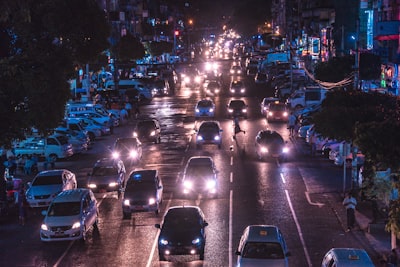
The Shwezigon Pagoda is one of the most iconic landmarks in Bagan. This golden stupa dates back to the 11th century and is considered one of the earliest and most significant Buddhist monuments in the region. Visitors can admire the intricate carvings and architectural details that adorn the pagoda. The Ananda Temple is another must-visit site in Bagan. This well-preserved temple is renowned for its four standing Buddha statues, each facing a different direction. The temple's impressive architecture, featuring a mix of Indian and Burmese styles, is a testament to the region's rich cultural heritage. The Dhammayangyi Temple is the largest temple in Bagan and is known for its impressive size and unique architectural features. Visitors can explore the temple's intricate brick work and discover the hidden passages and chambers within. The Sulamani Temple is a stunning example of Bagan's architectural prowess. This 12th-century temple features intricate carvings, frescoes, and a central stupa that offers panoramic views of the surrounding landscape. The Shwesandaw Pagoda is a popular spot for watching the sunset over the Bagan plains. Visitors can climb the 5 terraces of this ancient stupa to enjoy breathtaking views of the surrounding temples and the Irrawaddy River. The Bagan Archaeological Museum is a must-visit for those interested in learning more about the history and culture of Bagan. The museum houses a vast collection of artifacts, including ancient sculptures, inscriptions, and religious relics. The Nyaung U Market is a lively local market where visitors can immerse themselves in the daily life of Bagan's residents. Here, they can find a variety of local produce, handicrafts, and traditional Burmese cuisine. These are just a few of the many must-see attractions in Bagan, Myanmar. With its rich history, stunning architecture, and vibrant cultural heritage, Bagan is a truly remarkable destination that should be on every traveler's bucket list.
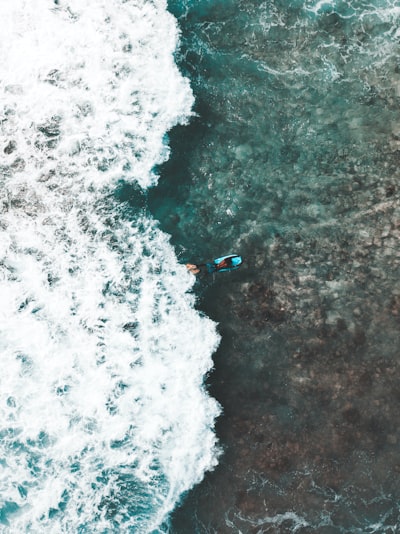
The Maldives is a stunning archipelago of over 1,000 coral islands in the Indian Ocean, known for its crystal-clear turquoise waters, pristine white sand beaches, and luxurious overwater bungalow resorts. Some of the top must-see attractions in the Maldives include: Bioluminescent Beach One of the most magical natural wonders in the Maldives is the bioluminescent beach on Vaadhoo Island. At night, the waves gently lapping the shore create a mesmerizing display of glowing blue-green phytoplankton, creating an otherworldly, ethereal scene. Hanifaru Bay Located in the Baa Atoll, Hanifaru Bay is a UNESCO Biosphere Reserve that is renowned for its high concentration of manta rays and whale sharks, especially during the monsoon season from June to November. Snorkeling or diving in Hanifaru Bay offers the chance to see these majestic marine creatures up close. Banana Reef One of the Maldives' most famous dive sites, Banana Reef in North Malé Atoll is a vibrant underwater wonderland teeming with colorful coral, schools of tropical fish, and the occasional reef shark or eagle ray. It's a must-visit for scuba divers and snorkelers. Hulhumale While the Maldives is known for its remote, private island resorts, the man-made island of Hulhumale offers a more urban experience. Stroll along the lively promenade, visit the local markets, and enjoy the bustling atmosphere. Utheemu Ganduvaru Step back in time at the Utheemu Ganduvaru, the former palace of Sultan Mohamed Thakurufaanu, a 16th-century Maldivian hero. This beautifully preserved wooden palace provides a glimpse into the country's rich history and cultural heritage. Ithaa Undersea Restaurant For a truly unique dining experience, make a reservation at Ithaa Undersea Restaurant, the world's first all-glass underwater restaurant, located 16 feet below the surface of the Indian Ocean at the Conrad Maldives Rangali Island resort. Angaga Island Angaga Island in the South Ari Atoll is a picturesque tropical paradise with pristine white sand beaches, swaying palm trees, and crystal-clear turquoise waters. It's the perfect place to relax, unwind, and soak up the Maldivian sun. These are just a few of the many must-see attractions and experiences that the Maldives has to offer. Whether you're seeking adventure, relaxation, or a unique cultural immersion, this stunning island nation is sure to leave a lasting impression.
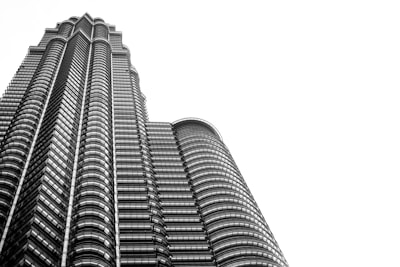
Petronas Towers The iconic Petronas Towers are the main attraction in Kuala Lumpur. Standing at 451.9 meters (1,483 feet), the twin towers are the tallest twin buildings in the world. Visitors can take a tour and access the Skybridge on the 41st floor, which connects the two towers, and the Observation Deck on the 86th floor, offering panoramic views of the city. KLCC Park Surrounding the Petronas Towers is the KLCC Park, a 50-acre urban park with lush greenery, jogging paths, and a man-made lake. The park also features a children's playground, a wading pool, and the KLCC Fountain, which puts on a mesmerizing light and sound show in the evenings. Suria KLCC Attached to the Petronas Towers is the Suria KLCC, a high-end shopping mall with over 1,000 shops, restaurants, and entertainment options. It's one of the largest shopping malls in Southeast Asia and a popular destination for both locals and tourists. Islamic Arts Museum Malaysia Located near the Petronas Towers, the Islamic Arts Museum Malaysia is home to one of the world's finest collections of Islamic art and artifacts. The museum features impressive architecture and showcases Islamic art, culture, and history through its extensive galleries and exhibits. Aquaria KLCC Aquaria KLCC is an aquarium located within the KLCC complex, featuring a 90-meter underwater tunnel that allows visitors to observe a diverse array of marine life, including sharks, rays, and various tropical fish species. Kuala Lumpur Tower The Kuala Lumpur Tower, also known as the KL Tower, is a communications tower that offers stunning views of the city from its observation deck and revolving restaurant at the top. Visitors can also enjoy the tower's various attractions, such as the Skywalk and the Upside Down House. Central Market The Central Market, or Pasar Seni, is a vibrant and historic marketplace located in the heart of Kuala Lumpur. It's a hub for local handicrafts, souvenirs, and traditional Malaysian cuisine, offering a glimpse into the country's rich cultural heritage. Batu Caves Just a short drive from the city center, the Batu Caves are a series of limestone caves and Hindu temples that are a popular pilgrimage site. The main attraction is the 272 steps leading up to the iconic 43-meter-tall golden statue of Lord Murugan. Merdeka Square Merdeka Square, also known as Dataran Merdeka, is a historic square in Kuala Lumpur that was the site of Malaysia's independence declaration in 1957. The square is surrounded by colonial-era buildings and is a popular spot for cultural events and celebrations. National Mosque of Malaysia The National Mosque of Malaysia, or Masjid Negara, is a stunning example of modern Islamic architecture. Visitors can explore the mosque's serene interiors and learn about the Islamic faith and culture. These are just a few of the must-see attractions in Kuala Lumpur and the surrounding areas. With its diverse cultural heritage, stunning architecture, and vibrant urban landscape, Petronas Towers and its surrounding attractions offer a truly unforgettable travel experience.
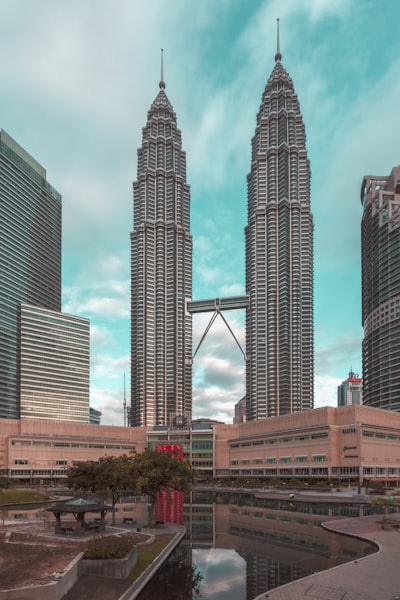
Petronas Twin Towers The Petronas Twin Towers are the iconic landmarks of Kuala Lumpur. Standing at 451.9 meters (1,483 feet), the twin skyscrapers are the tallest twin buildings in the world. Visitors can access the Skybridge on the 41st floor and the Observation Deck on the 86th floor for stunning views of the city. Batu Caves The Batu Caves are a limestone hill with a series of caves and cave temples. The main attraction is the 272 steps leading up to the entrance of the largest cave, which features a 42.7-meter (140-foot) tall golden statue of Lord Murugan, the Hindu deity. The caves are an important religious site for Hindus and a popular tourist destination. Merdeka Square Merdeka Square, also known as Independence Square, is a historic site where Malaysia's independence from the British was declared in 1957. The square features colonial-era buildings, including the Sultan Abdul Samad Building, and is surrounded by lush greenery. It's a popular spot for cultural events and celebrations. Central Market The Central Market, or Pasar Seni, is a vibrant hub for local arts, crafts, and souvenirs. The market building itself is an architectural gem, with a mix of Moorish and Victorian influences. Visitors can browse the stalls, watch artisans at work, and sample local street food. Thean Hou Temple The Thean Hou Temple is one of the largest Chinese temples in Southeast Asia. The six-tiered temple is dedicated to the Goddess of the Sea, Thean Hou, and features intricate carvings, statues, and traditional Chinese architecture. It's a popular spot for cultural events and festivals. Kuala Lumpur Bird Park The Kuala Lumpur Bird Park is the world's largest free-flight walk-in aviary, home to over 3,000 birds from more than 200 species. Visitors can stroll through the lush, landscaped gardens and observe the birds in their natural habitats. Perdana Botanical Garden The Perdana Botanical Garden, also known as the Lake Gardens, is a sprawling urban park with a variety of themed gardens, including the Orchid Garden, Hibiscus Garden, and Deer Park. It's a peaceful oasis in the heart of the city, perfect for a leisurely stroll or picnic. Islamic Arts Museum Malaysia The Islamic Arts Museum Malaysia is one of the world's largest museums dedicated to Islamic art and culture. The museum's collection includes over 7,000 artifacts, ranging from ceramics and textiles to metalwork and calligraphy, showcasing the rich diversity of Islamic art and design. Chinatown Kuala Lumpur's Chinatown is a vibrant, bustling neighborhood known for its street markets, hawker stalls, and traditional Chinese shops. Visitors can explore the narrow streets, sample local delicacies, and browse the colorful shops for souvenirs and handicrafts. Menara Kuala Lumpur (KL Tower) The Menara Kuala Lumpur, or KL Tower, is the seventh-tallest free-standing tower in the world, standing at 421 meters (1,381 feet). Visitors can access the observation deck and revolving restaurant at the top, offering panoramic views of the city.
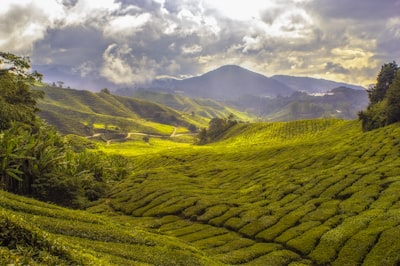
Telaga Tujuh Waterfalls: Also known as the Seven Wells, this picturesque waterfall is a popular spot for swimming and hiking. The cascading waters flow through a series of natural pools, creating a serene and refreshing environment. Langkawi Sky Bridge: This iconic 410-meter-long curved pedestrian bridge offers breathtaking views of the surrounding islands and the Andaman Sea. Visitors can access the bridge by taking a cable car ride to the top of Gunung Mat Cincang. Pulau Payar Marine Park: This protected marine park is renowned for its diverse underwater ecosystem, making it a prime destination for snorkeling and scuba diving. Visitors can explore the vibrant coral reefs and spot a variety of marine life, including schools of tropical fish and sea turtles. Langkawi Geopark: Designated as a UNESCO Global Geopark, this unique geological landscape features ancient rock formations, limestone cliffs, and mangrove forests. Visitors can explore the geopark through hiking trails, boat tours, and guided tours. Dataran Lang (Eagle Square): This iconic landmark features a large, striking sculpture of an eagle, which is the national symbol of Malaysia. The square offers stunning views of the Andaman Sea and is a popular spot for photography. Pantai Cenang: This lively beach is a hub for water sports, dining, and shopping. Visitors can enjoy a variety of activities, such as parasailing, jet skiing, and exploring the local markets and restaurants. Kilim Geoforest Park: This protected mangrove forest is a haven for wildlife, including monkeys, eagles, and unique flora and fauna. Visitors can explore the park through guided boat tours and witness the intricate ecosystem.
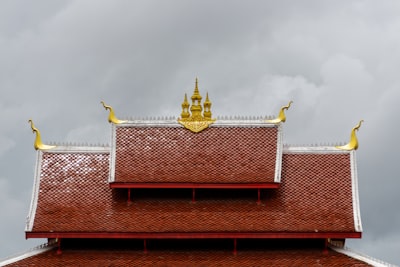
Mount Phousi: This iconic hill in the heart of the city offers panoramic views of Luang Prabang and the surrounding landscape. Climb the 328 steps to the summit and witness the stunning sunrise or sunset over the city. Royal Palace Museum: Formerly the residence of the Lao royal family, this museum showcases the opulent architecture and artifacts that reflect the country's rich history and culture. Visitors can explore the throne room, reception halls, and personal quarters of the former kings. Wat Xieng Thong: One of the most renowned Buddhist temples in Luang Prabang, Wat Xieng Thong is known for its intricate and ornate architecture, featuring the iconic "tree of life" mosaic on the rear temple wall. Kuang Si Waterfall: Located just 29 kilometers from Luang Prabang, this stunning multi-tiered waterfall cascades over turquoise pools, offering a refreshing escape from the city. Visitors can swim in the natural pools, hike to the upper falls, and explore the surrounding forest. Tat Sae Waterfall: Another picturesque waterfall near Luang Prabang, Tat Sae features a series of cascades and natural pools, making it a popular spot for swimming and relaxation. Pak Ou Caves: These two limestone caves, located along the Mekong River, are home to thousands of Buddha statues, ranging from small figurines to large, impressive sculptures. The caves can be accessed by boat or by road. Luang Prabang Night Market: This vibrant night market is a hub of local culture, offering a wide variety of handicrafts, textiles, and traditional Lao cuisine. Visitors can browse the stalls, sample local delicacies, and immerse themselves in the lively atmosphere. Wat Visoun: Also known as the "Watermelon Stupa," this temple is renowned for its unique, rounded stupa design and the collection of ancient Buddhas housed within its walls. Wat Aham: This temple is known for its two large banyan trees, which are believed to be the abode of two guardian spirits, and its impressive collection of Buddhist artifacts and murals. Wat Sene: This temple, with its distinctive red and gilded architecture, is one of the oldest in Luang Prabang and is known for its intricate wood carvings and murals. Pha Tad Ke Botanical Garden: This serene botanical garden, located across the Mekong River, offers a peaceful escape and showcases the diverse flora of Laos, including rare and endangered plant species. Elephant Village: Visitors can interact with and observe the gentle giants at this ethical elephant sanctuary, which aims to provide a safe and nurturing environment for the elephants. Luang Prabang is a captivating destination that seamlessly blends ancient traditions with modern influences. From the stunning natural landscapes to the rich cultural heritage, this UNESCO World Heritage Site offers a wealth of must-see attractions that will leave a lasting impression on every traveler.
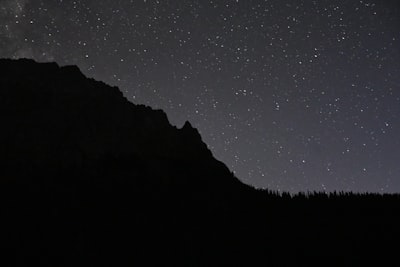
Issyk Kul Lake: Nestled between the Tian Shan ranges, Issyk Kul is the second-largest mountain lake in the world and a true natural gem. Renowned for its crystal-clear waters, stunning turquoise hues, and picturesque shoreline, Issyk Kul is a popular destination for swimming, boating, and enjoying the serene natural beauty. Jeti-Oguz Gorge: This stunning red sandstone gorge, with its distinctive "Seven Bulls" rock formations, is a breathtaking sight. Visitors can hike through the gorge, explore the nearby hot springs, and take in the awe-inspiring views of the surrounding mountains. Skazka Canyon: Also known as the "Fairy Tale Canyon," this unique geological formation features vibrant red, yellow, and white rock formations that have been sculpted by wind and water over time. Hiking through the canyon is a truly magical experience. Ala-Archa National Park: This protected natural area is home to towering snow-capped peaks, glaciers, alpine meadows, and a diverse array of wildlife. Visitors can hike through the park, explore the Ala-Archa Gorge, and even spot rare species like the Tian Shan brown bear. Burana Tower: This ancient minaret, dating back to the 11th century, is a testament to the rich history and cultural heritage of the region. Visitors can climb to the top of the tower for panoramic views of the surrounding countryside. Cholpon-Ata Petroglyphs: This open-air museum features thousands of ancient rock carvings, some dating back as far as the Bronze Age. Exploring the petroglyphs offers a unique glimpse into the region's prehistoric past. Suusamyr Valley: This picturesque alpine valley is known for its lush meadows, crystal-clear streams, and stunning mountain vistas. Visitors can hike, horseback ride, or simply enjoy the serene natural beauty of the area. Arslanbob Walnut Forest: Located in the Jalal-Abad region, this ancient walnut forest is the largest in the world and a UNESCO World Heritage site. Visitors can explore the forest, learn about the local culture, and even participate in the annual walnut harvest. Tash Rabat Caravanserai: This well-preserved 15th-century caravanserai, or roadside inn, offers a glimpse into the region's rich history as a hub of the Silk Road trade route. Visitors can explore the intricate architecture and imagine the bustling activity that once took place here. Sary-Chelek Biosphere Reserve: This UNESCO-protected biosphere reserve is home to a stunning alpine lake, lush forests, and a diverse array of flora and fauna. Visitors can hike, birdwatch, and immerse themselves in the natural beauty of this unique ecosystem. These are just a few of the many must-see attractions in the Tian Shan Mountains of Kyrgyzstan. Whether you're interested in outdoor adventure, cultural exploration, or simply soaking in the breathtaking natural scenery, this region has something to offer every traveler.
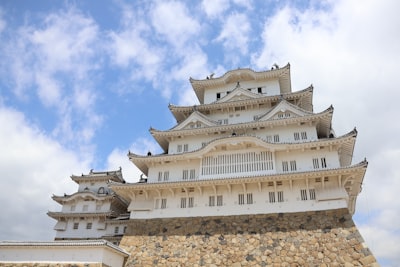
Himeji Castle: The main attraction, this magnificent castle dates back to the 14th century and is known for its intricate architecture, including the iconic white walls and distinctive roofs. Explore the castle's many levels, corridors, and hidden passages, and admire the stunning views from the top. Nishi-no-Maru: This former residential area of the castle is now open to the public and offers a glimpse into the daily life of the castle's inhabitants. Stroll through the beautiful gardens and admire the traditional architecture. Hyakken-Gura: These are the castle's defensive turrets, which were designed to protect the castle from attack. Climb to the top for panoramic views of the surrounding area. Okiku-no-Tsubo: This well-known legend tells the story of a servant girl named Okiku, who was allegedly murdered and now haunts the castle. Visit the well where her spirit is said to reside. Kokoen Garden: Adjacent to the castle, this traditional Japanese garden features nine separate, themed gardens, each with its own unique charm and beauty. Himeji City Museum: Learn more about the history and culture of Himeji at this museum, which features exhibits on the castle, local traditions, and the region's natural environment. Shoshazan Engyoji Temple: This historic Buddhist temple complex, located on a nearby mountain, offers stunning views of the castle and the surrounding landscape. It's a peaceful and serene escape from the crowds. By exploring these must-see attractions, you'll gain a deeper understanding and appreciation for the rich history and cultural significance of Himeji Castle and the surrounding area.